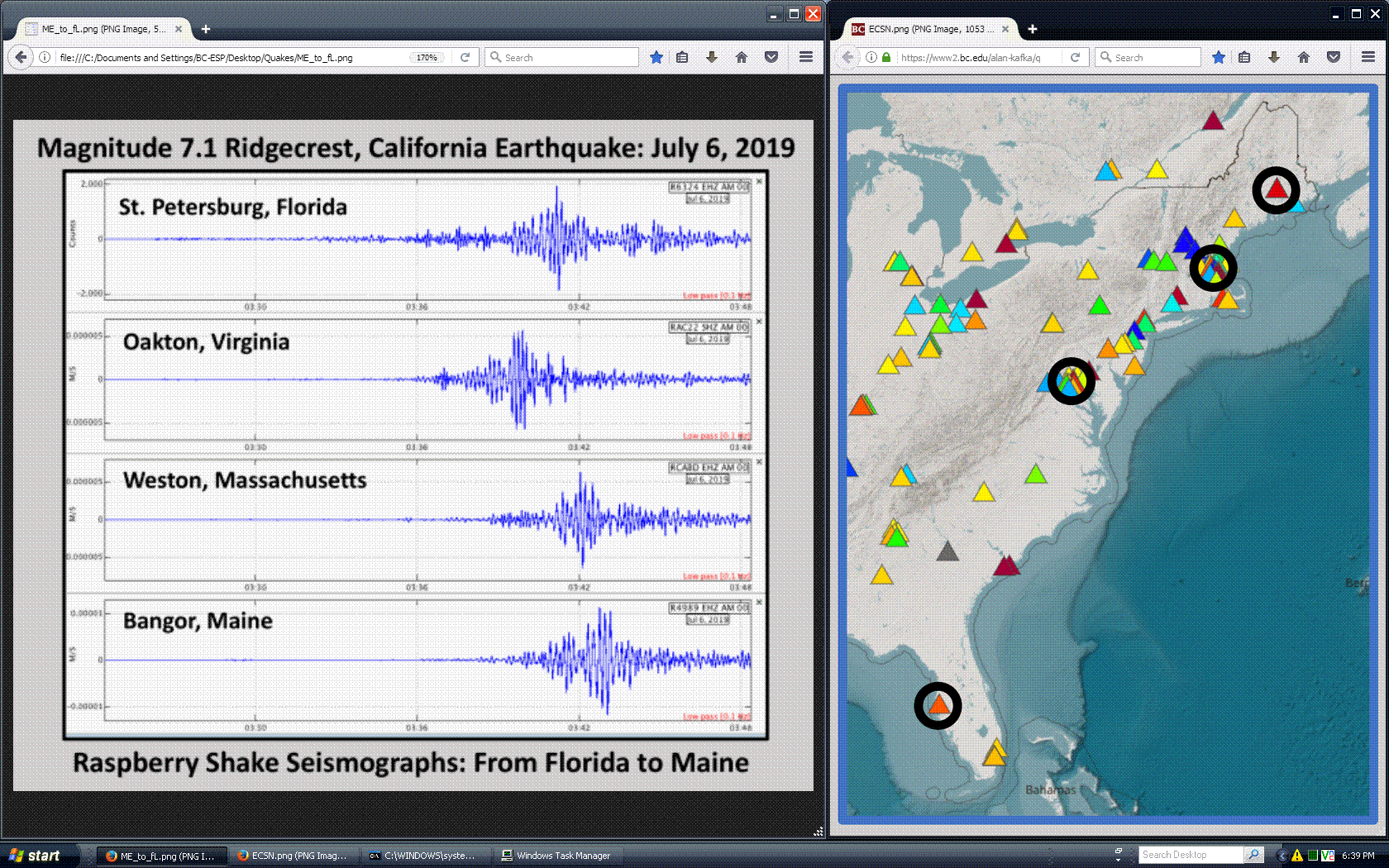Track Earthquake Activity
Live feed of seismograph located at Weston Observatory
This seismogram shows a 24-hour record of how much the ground moves at Weston Observatory in Weston, Massachusetts. Viewing other seismic stations will show you how much the ground moves in those locations. The seismogram is read like a book, from left to right and top to bottom. The current signal is shown near the bottom. As with a book, the right end of any horizontal line connects with the left end of the line below it. Time is indicated at the left end of the lines in Universal (or Greenwich) Time.
When an earthquake occurs, the seismogram will show ground motion fluctuations that typically last from tens of seconds to many minutes depending on the size of the earthquake. The height of the recorded waves on the seismogram (wave amplitude) is a greatly magnified representation of the actual ground motion.
A recording of an earthquake has recognizable characteristics. Typically, one can recognize the arrival of different wave types. The P waves (the fastest traveling waves), S waves, and Surface waves which commonly produce the highest wave amplitudes.
On this seismogram, you might see local earthquakes in the northeast United States or earthquakes that occurred elsewhere in the world. Almost any earthquake in the World having a magnitude greater than about 6.0Ěýwill be seen on this seismogram as well as any other seismograms from stations in the northeast United States. Check the USGS Earthquakes +4.5 feed below or visit theĚýĚýto find out more information about recent earthquakes
Not all the wiggles seen on the seismograms are due to earthquakes. Anything that produces ground vibrations can be recorded. For example, cars on I-90 and I-95/Rt. 128 (especially during rush hour) cause slight vibrations in the ground that our seismometers record (this is why, in general, most seismometers are located away from roads). Blasts from quarry or mining activity can also produce seismic waves that look like earthquakes. Natural phenomena such as stormsĚýcan also cause ground vibrations. These ground vibrations from such natural sources are called âMicroseismsâ.


